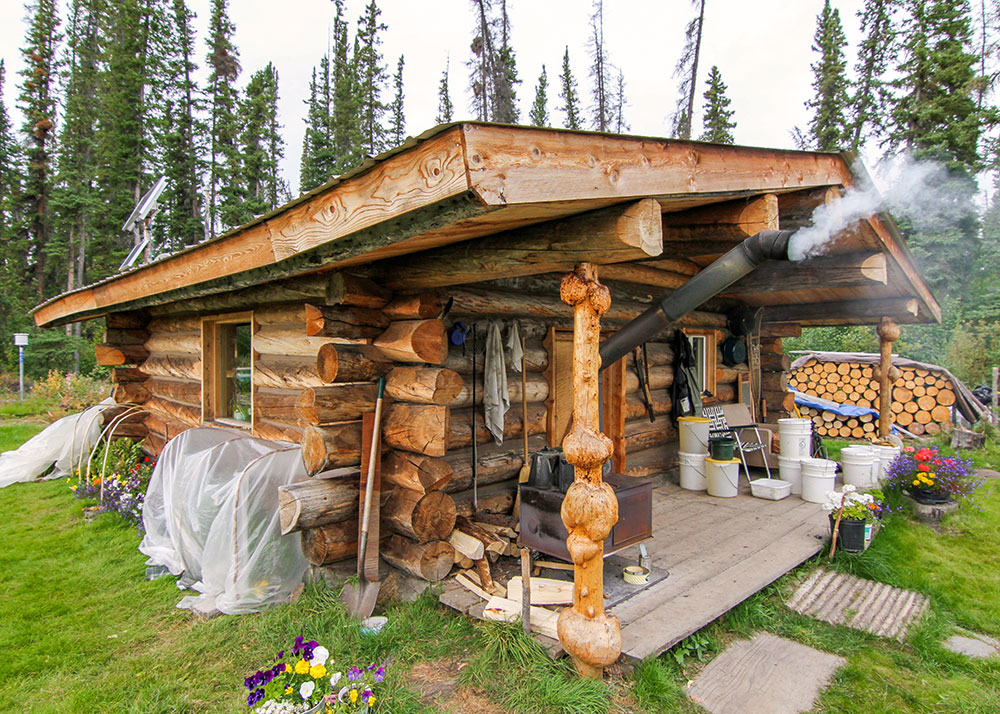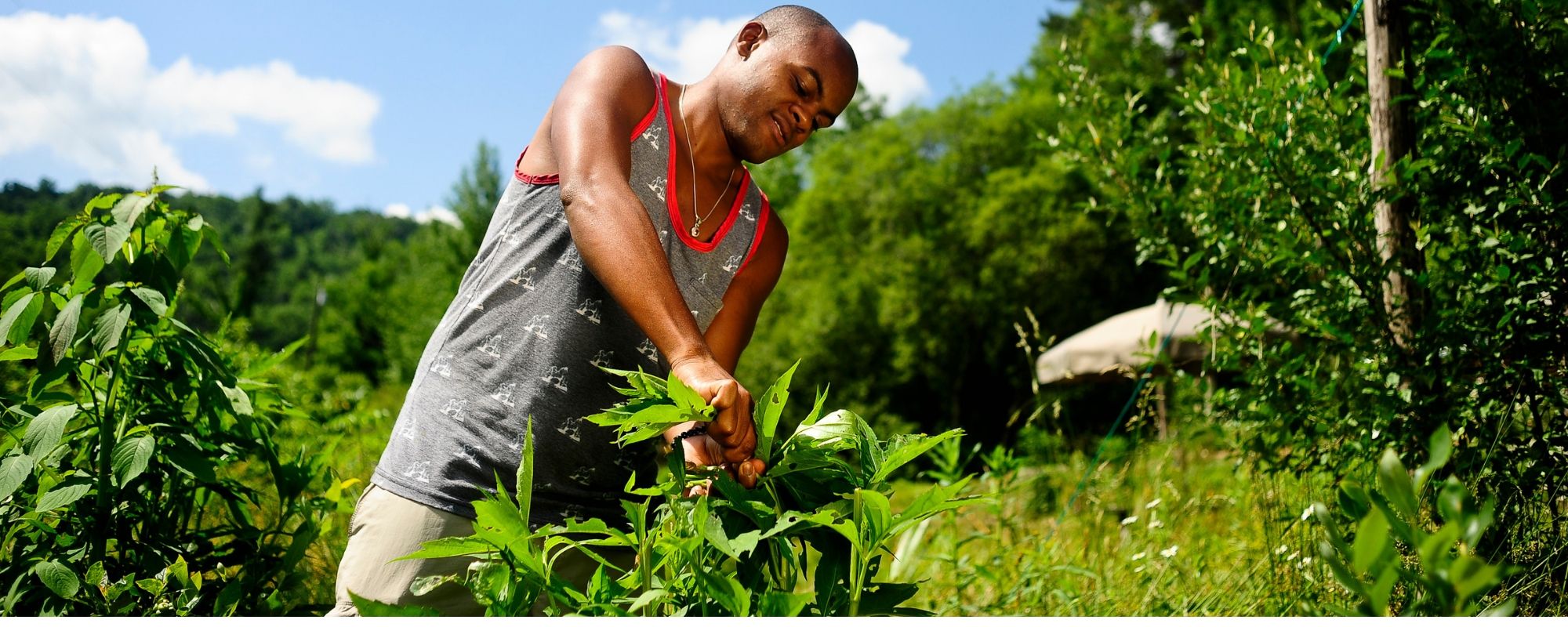Embark on the path to self-sufficiency with “How to Start Living Off the Land,” a comprehensive guide that empowers you to disconnect from the grid and reconnect with nature’s bounty.
From acquiring essential skills to establishing a sustainable homestead, this guide unravels the secrets of living harmoniously with the land.
Acquiring Essential Skills and Knowledge
Becoming self-sufficient requires the development of essential skills and knowledge. These skills empower individuals to provide for their own needs, reducing reliance on external resources.
Essential skills include foraging, hunting, and gardening. Foraging involves identifying and harvesting edible plants, while hunting provides sustenance through the acquisition of game. Gardening allows individuals to cultivate their own food sources, ensuring a reliable supply of produce.
Understanding Local Flora and Fauna
Knowledge of local flora and fauna is crucial for survival off the land. Understanding the distribution, seasonality, and edibility of plants is essential for foraging. Similarly, familiarity with animal behavior, habitat, and hunting techniques is necessary for successful hunting.
- Identifying edible plants and distinguishing them from poisonous species
- Recognizing animal tracks and signs to locate prey
- Learning about the nutritional value and medicinal properties of local plants
- Understanding animal behavior patterns to anticipate their movements
Establishing a Homestead
Selecting a suitable location is paramount when establishing a homestead. Consider access to essential resources such as water, fertile soil, and building materials. Proximity to transportation routes and markets can also enhance sustainability.Shelter construction using natural materials is a fundamental skill for homesteaders.
Utilize local resources like wood, stone, and clay to create durable and eco-friendly structures. Understand the principles of insulation, ventilation, and drainage to ensure comfort and longevity.Sustainable agriculture and animal husbandry are crucial for self-sufficiency. Implement crop rotation, companion planting, and organic pest control to maintain soil health and productivity.
Raise animals for food, fiber, and transportation, ensuring ethical treatment and responsible management of resources.
Water Sources
* Identify reliable sources of water, such as rivers, streams, or aquifers.
- Construct rainwater harvesting systems to supplement natural water sources.
- Explore water filtration and purification techniques to ensure clean drinking water.
Fertile Soil
* Test soil quality to determine its suitability for agriculture.
- Implement soil amendments, such as compost and manure, to improve fertility and drainage.
- Practice sustainable farming techniques to maintain soil health and productivity.
Building Materials
* Utilize local resources like timber, stone, and clay for shelter construction.
- Learn traditional building techniques that enhance durability and sustainability.
- Consider energy-efficient design principles to minimize environmental impact.
Sustainable Agriculture
* Implement crop rotation to maintain soil fertility and prevent disease.
- Practice companion planting to enhance plant growth and pest resistance.
- Utilize organic pest control methods, such as crop covers and beneficial insects.
Animal Husbandry
* Choose livestock species that are suitable for your climate and resources.
- Ensure ethical treatment and responsible management of animals.
- Utilize pasture management techniques to maintain grazing land and animal health.
Food Procurement
Sustaining oneself through food procurement is a crucial aspect of living off the land. It involves acquiring food from natural sources, utilizing a combination of foraging, hunting, and fishing techniques. Establishing a food preservation system is also essential to ensure a steady supply throughout the year.
Foraging
Foraging involves gathering edible plants and mushrooms from the wild. It requires a thorough knowledge of local flora and their nutritional value. Common foraging techniques include:
- Identifying edible plants:Study field guides and consult with experienced foragers to learn about edible species in your area.
- Sustainable harvesting:Practice responsible foraging by taking only what you need and leaving enough for wildlife and future generations.
li> Preserving foraged items:Dry, can, or pickle foraged plants to extend their shelf life and make them available during off-seasons.
Hunting
Hunting provides a source of protein and other nutrients. Ethical hunting practices emphasize sustainability and respect for wildlife. Techniques include:
- Archery:Using a bow and arrow to hunt game requires skill and precision.
- Trapping:Setting traps to capture animals humanely and effectively.
- Firearms:Using firearms for hunting requires proper training and safety precautions.
Fishing
Fishing offers a sustainable way to acquire fish for food. Techniques include:
- Rod and reel:Using a rod, reel, and bait to catch fish in lakes, rivers, or oceans.
- Spearfishing:Using a spear to hunt fish underwater, requiring skill and breath-holding ability.
- Netting:Setting nets in water bodies to catch fish in large numbers.
Food Preservation
Preserving food is essential to prevent spoilage and ensure a steady supply. Methods include:
- Drying:Removing moisture from food by exposing it to air or heat, making it lightweight and shelf-stable.
- Canning:Sealing food in airtight containers and heating it to kill bacteria, extending its shelf life significantly.
- Smoking:Exposing food to smoke to preserve it and add flavor, creating a natural barrier against spoilage.
Water Management
Securing a reliable water source is essential for survival when living off the land. Water is used for drinking, cooking, sanitation, and many other purposes. In areas with limited access to clean water, it is important to be able to collect, purify, and store water safely.
There are a number of ways to collect water, including rainwater harvesting, groundwater extraction, and surface water collection. Rainwater harvesting involves collecting rainwater from rooftops or other surfaces and storing it in tanks or cisterns. Groundwater extraction involves drilling a well to access underground water.
Surface water collection involves collecting water from rivers, lakes, or streams.
Once water has been collected, it is important to purify it to remove any contaminants. There are a number of ways to purify water, including boiling, filtration, and chemical disinfection. Boiling water is the most effective way to kill bacteria and other microorganisms.
Filtration can remove sediment and other particles from water. Chemical disinfection can be used to kill bacteria and other microorganisms, but it is important to follow the manufacturer’s instructions carefully.
Once water has been purified, it is important to store it safely to prevent contamination. Water can be stored in tanks, cisterns, or other containers. It is important to keep water containers clean and covered to prevent contamination.
Rainwater Harvesting
Rainwater harvesting is a great way to collect water for free. Rainwater is naturally soft and free of impurities, making it ideal for drinking, cooking, and other purposes. To harvest rainwater, you will need to install a rainwater catchment system.
A rainwater catchment system consists of a roof, gutters, and a storage tank. The roof collects the rainwater, the gutters channel the water into the storage tank, and the storage tank stores the water for later use.
Groundwater Extraction
Groundwater extraction is another way to collect water. Groundwater is water that is stored underground in aquifers. Aquifers are layers of rock or soil that contain water. To extract groundwater, you will need to drill a well. A well is a hole that is drilled into the ground to reach the aquifer.
Once the well has been drilled, you can use a pump to extract the water.
Energy Generation
Living off the land necessitates self-sufficiency in energy generation. Embracing renewable energy sources, such as solar and wind power, is crucial for a sustainable lifestyle.
Harnessing solar energy involves installing solar panels that convert sunlight into electricity. Wind turbines, on the other hand, utilize the kinetic energy of wind to generate power. These systems can provide electricity for lighting, cooking, and heating.
Energy Conservation and Efficiency
Conserving energy is equally important. Simple measures like using energy-efficient appliances, implementing insulation, and employing passive solar design techniques can significantly reduce energy consumption.
Crafting and Toolmaking: How To Start Living Off The Land

Living off the land requires a deep understanding of how to craft essential tools and utensils from natural materials. This includes mastering techniques such as leatherworking, woodworking, and pottery, which allow you to create functional items that enhance your self-sufficiency.
Traditional Tools
Traditional tools are indispensable in off-grid living, providing a sustainable and reliable way to perform essential tasks. From axes and knives for woodworking to needles and awls for leatherworking, these tools are designed to withstand the rigors of outdoor use and offer a connection to the past.
Leatherworking
Leatherworking involves the processing and crafting of animal hides into durable and versatile materials. By using traditional techniques such as tanning, cutting, and stitching, you can create items like clothing, footwear, bags, and belts that are both functional and long-lasting.
Woodworking
Woodworking is the art of shaping and assembling wood into useful objects. From building shelters and furniture to creating tools and utensils, woodworking provides a means to harness the natural resources of your environment and create essential items for daily life.
Pottery
Pottery involves the molding and firing of clay into functional and decorative objects. By mastering the techniques of wheel throwing, hand building, and glazing, you can create cookware, storage containers, and other essential items that are both durable and aesthetically pleasing.
Healthcare and Hygiene

Maintaining good health and hygiene is crucial in an off-grid environment, where access to conventional medical care may be limited. By embracing natural remedies, implementing sound sanitation practices, and understanding disease prevention, individuals can safeguard their well-being and thrive in this unique setting.
Natural Remedies and Herbal Medicine, How to start living off the land
Harnessing the healing power of nature is a cornerstone of off-grid healthcare. Identifying and utilizing medicinal plants for common ailments can provide effective and sustainable remedies. Herbal teas, tinctures, and salves can address a range of conditions, from digestive issues to skin infections.
Sanitation Practices and Waste Management
Maintaining a clean and sanitary environment is essential for preventing the spread of disease. Establishing a designated waste disposal area, practicing proper handwashing techniques, and ensuring access to clean water are crucial. Composting and utilizing biodegradable materials for waste management can further contribute to a healthy living environment.
Disease Prevention
Understanding the potential health risks associated with an off-grid lifestyle is paramount. Knowledge of common diseases, their symptoms, and preventive measures is essential. Vaccination, insect repellent, and proper food handling practices are key to minimizing the risk of illness and ensuring overall well-being.
Community and Collaboration

Living off the land can be a rewarding but challenging endeavor. Establishing a community and fostering collaboration with others who share similar goals can significantly enhance the experience and increase the chances of success.
Cooperation and resource sharing are essential principles in off-grid communities. Members can pool their skills, knowledge, and resources to overcome challenges and create a more sustainable and resilient way of life. They can collaborate on projects such as building shelters, growing food, or generating energy.
Successful Off-Grid Communities
Several examples of successful off-grid communities demonstrate the benefits of collaboration and cooperation.
- Earthship Biotecturein New Mexico is a community of homes built using sustainable and recycled materials. Residents share resources, such as water and energy, and work together to maintain the community’s infrastructure.
- The Farm at Tassajarain California is a Zen mountain center and organic farm. The community members practice sustainable farming, meditation, and other spiritual practices. They share responsibilities for daily tasks and decision-making.
Final Summary
Living off the land is not merely a dream but a reality that can be achieved with the right knowledge and mindset. This guide provides a roadmap to embrace self-reliance, cultivate resilience, and forge a deep connection with the natural world.
Top FAQs
Is it possible to live off the land in modern times?
Absolutely! With proper planning and preparation, individuals can achieve self-sufficiency by utilizing the resources nature provides.
What are the essential skills needed for living off the land?
Essential skills include foraging for wild edibles, hunting, gardening, and basic construction techniques.
How can I find a suitable location for a homestead?
Consider factors such as access to water, fertile soil, and proximity to natural resources when selecting a homestead location.
